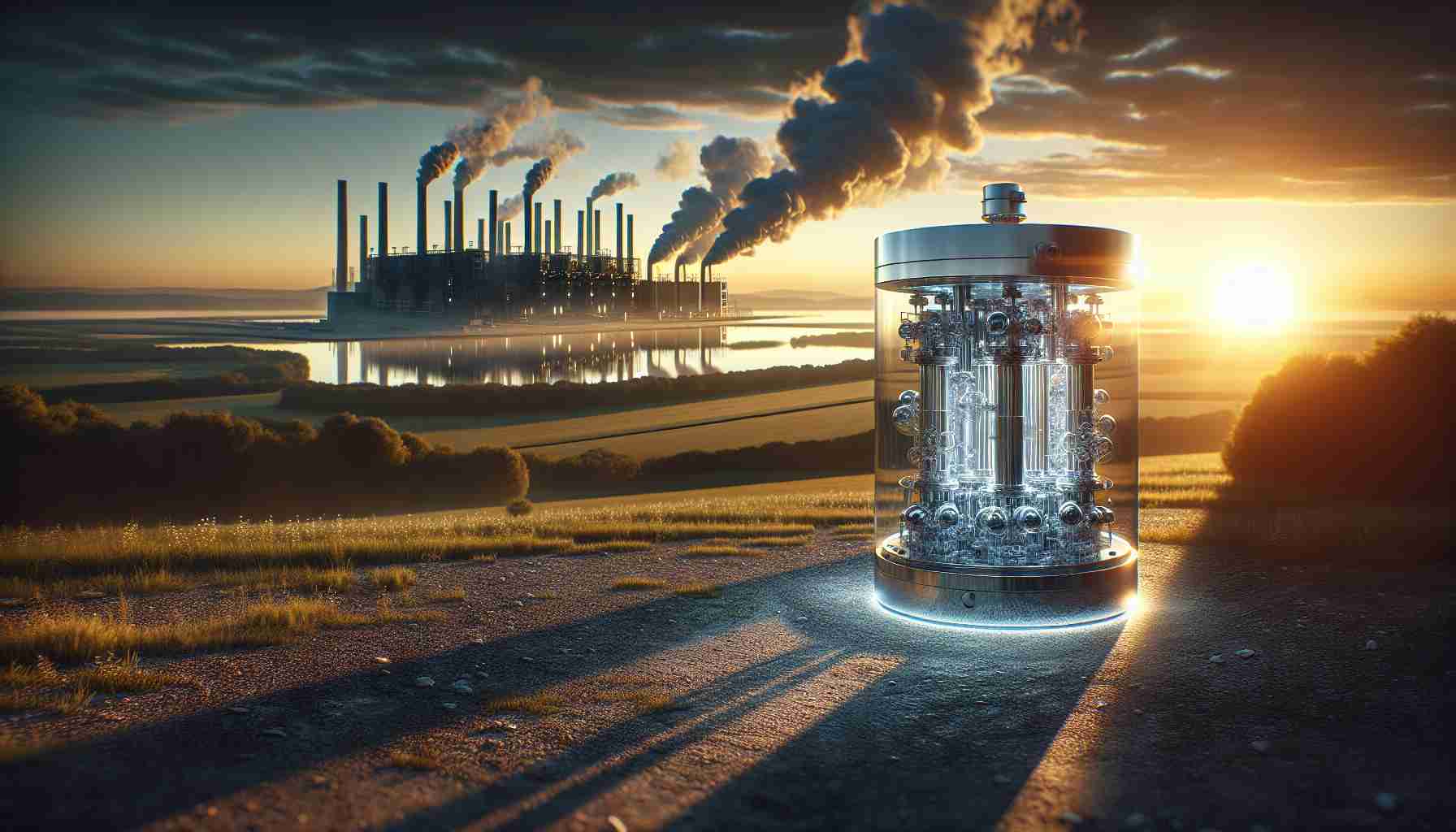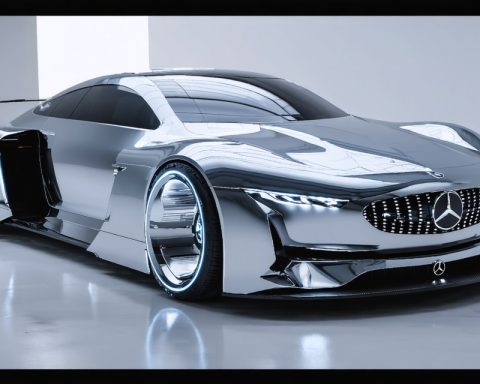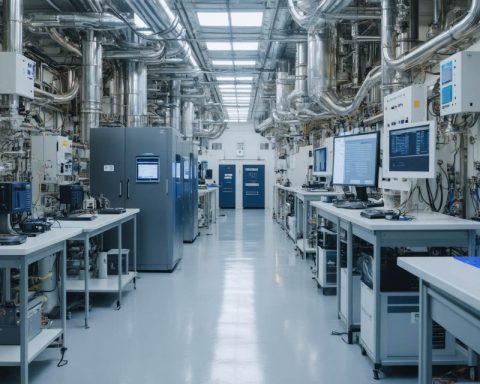The future of energy is green! Explore how innovative technologies and research are transforming the landscape of renewable energy.
NewHydrogen (OTCMKTS:NEWH), the brain behind the groundbreaking ThermoLoop™ technology, recently brought together CEO Steve Hill and UC Berkeley’s Dr. Daniel Kammen for an enlightening podcast. The central focus of their discussion was the dramatic decline in costs for solar and wind energy, with solar plummeting by 90% and wind by 60% in the past decade. This shift renders new renewable energy plants more economical compared to existing fossil fuel operations.
The urgency for a transition to green hydrogen, distinct from gray or blue hydrogen derived from fossil fuels, was a key point of emphasis. Dr. Kammen pointed to Japan’s National Hydrogen Strategy as a guiding framework, proposing that a commitment to renewable energy and hydrogen could lead to total decarbonization by the 2040s, revolutionizing energy security and affordability.
Moreover, the use of electric vehicles (EVs) as mobile energy storage hubs was discussed. The integration of vehicle-to-grid (V2G) technology was recommended, suggesting that all new EVs should include this capability to enhance grid flexibility. Dr. Kammen also stressed the importance of establishing industrial hubs to showcase the advantages of green hydrogen, ensuring that the benefits are equitably shared across various communities.
The Broader Implications of the Green Energy Transition
The transition to green energy is not merely a technological advancement; it portends profound shifts across society, culture, and the global economy. As renewable energy sources like solar and wind continue to burgeon, the implications for job creation and economic growth are profound. A report from the International Renewable Energy Agency (IRENA) estimates that transitioning to renewable energy could create over 24 million jobs globally by 2030, providing an avenue for economic revival in many regions, especially those historically reliant on fossil fuels.
The cultural perception of energy consumption is also evolving. As communities become more environmentally conscious, there’s a growing movement toward sustainable living practices. Innovations like the vehicle-to-grid (V2G) system exemplify this shift, while also encouraging individual responsibility towards energy conservation. In many urban areas, local governments are incentivizing the adoption of EVs and renewable energy systems, further embedding sustainability into the cultural fabric.
However, the environmental repercussions of the green energy shift are paramount. Moving away from fossil fuels reduces greenhouse gas emissions, significantly impacting climate change mitigation. Yet, challenges remain in managing the lifecycle of renewable energy technologies, such as the environmental costs associated with lithium mining for batteries and the land use for solar farms.
Looking ahead, the demand for renewable energy solutions and technological innovations will likely surge. Future trends may see advancements in energy storage technologies, efficiency improvements, and expanded implementation of hydrogen solutions, all crucial for a sustainable energy landscape. The long-term significance of this transition lies in its potential to create resilient energy systems that prioritize not just economic viability, but also social equity and environmental stewardship.
The Future of Energy: How Green Innovations Are Changing the Game
The Transformative Impact of Renewable Energy Technologies
In recent years, the shift toward renewable energy sources has marked a significant change in the global energy landscape. Innovative technologies like NewHydrogen’s ThermoLoop™ are at the forefront of this transformation, revealing exciting prospects for the future of green energy.
The Dramatic Cost Decline in Renewable Energy
Recent discussions with industry experts highlight a staggering decline in the costs associated with solar and wind energy. Over the past decade, solar energy costs have dropped by an impressive 90%, while wind energy has decreased by 60%. This trend indicates that new renewable energy projects are now more financially viable than existing fossil fuel operations. With such competitive pricing, it’s evident that the renewable energy sector is on the brink of significant expansion.
Green Hydrogen: A Key Player in Decarbonization
A critical focus of ongoing research is the transition to green hydrogen, which offers a cleaner alternative to gray and blue hydrogen, the latter two being derived from fossil fuels. Experts argue that the adoption of green hydrogen could be a vital step towards achieving total decarbonization by the 2040s. For example, Japan has established a National Hydrogen Strategy that serves as a foundational model for other nations aiming for energy security through renewable sources.
Vehicle-to-Grid (V2G) Technology: A Game Changer
One of the most promising innovations in energy technology is the use of electric vehicles (EVs) as mobile energy storage units. The integration of vehicle-to-grid (V2G) technology allows EVs to contribute to the electrical grid, providing necessary flexibility. It is recommended that all new electric vehicles come equipped with V2G capabilities to fully harness this potential, allowing EV owners to sell back stored energy during peak demand times.
Establishing Industrial Hubs for Green Hydrogen
To maximize the benefits of green hydrogen, the establishment of industrial hubs is crucial. These hubs would not only showcase the advantages of green hydrogen technology but also ensure that the benefits of this transition are distributed equitably across different communities. This emphasis on inclusivity is essential for achieving widespread acceptance and implementation of renewable energy solutions.
Pros and Cons of Transitioning to Green Energy
Pros:
– Cost Efficiency: The drastic reduction in energy costs makes renewable sources more affordable.
– Environmental Benefits: Green hydrogen and renewables reduce carbon emissions significantly.
– Energy Security: Diversifying energy sources enhances resilience against supply disruptions.
– Technological Innovations: Advancements like V2G offer new revenue streams for EV owners.
Cons:
– Initial Investment: Transitioning infrastructure may require significant initial investment.
– Technological Readiness: Some technologies may still be in development and not widely available.
– Grid Integration: Existing electrical grids may need upgrades to accommodate new energy sources.
Future Trends and Predictions
The transition to green energy is expected to accelerate further in the coming years. With government support and private sector investment in renewable technologies, we can anticipate a robust growth in both the solar and wind energy sectors. Furthermore, the widespread adoption of electric vehicles, combined with green hydrogen innovations, is likely to reshape how societies approach energy consumption and sustainability.
For further insights into the ongoing advancements in renewable energy, check out NewHydrogen.


















